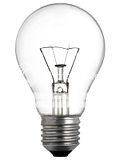Kids and Their Relationship With The Earth
While over at Beliefnet.com, I was reading an interesting article about how you can help your child become green and understand their relationship to the earth.
Anyone with children in their home, knows how busy the household is. There never seems to be enough time in a day to do everything. In most households where both parents work it is hard to fit everything in. You come home from work and need to do chores, make dinner, take care of homework etc.., there doesn't seem to be time left over before it's bedtime and then start over. Sound familiar?
Taking a few minutes each night or on the weekends to do the below suggestions, not only will improve the quality time with your kids, but you will be creating lasting memories.
* Have your child plant a seed or help with the garden. Have your kids nurture what they planted and watch it grow.
* Appreciate the beauty that surrounds you and/or listen to what you hear in nature. Stop and listen to the birds singing, look at the rain, the geese flying overhead, the lake, the sunsets.
* Plan a meal or two with your kids. Involve them in the meal preparation. Have them pick out some ingredients. Take them on a special shopping trip to the market.
* Try to have your child spend less time watching TV, being on the Internet or playing video games. Offer other interesting alternatives. Reading a book. Beliefnet.com offered the idea of reading 50 Things Kids Can Do to Save the Earth
* Do some arts and crafts with your child. Use some old buttons and jewelry that you may have laying around.
* Have you ever had a simple conversation about the circle of life with your child? Explain nature. Why do the leaves turn colors? When do deer come out to feed?
* Feel great and be healthy. Be silly. Laugh. Dance around or sing. Do some stretching exercises.
* Make some memories by feeding the animals. Remember as a child you took the crust from the bread or the old bread mom wanted to throw away and you fed the birds? I have this memory. My grandmother and I used to hang out the window and throw the bread. We'd watch the birds hurry to eat it all.
* Get outside. Breathe the air. Do some outdoor activities. Walk the dog together.
How do you teach your children about the earth?












 Stumble It!
Stumble It!

















